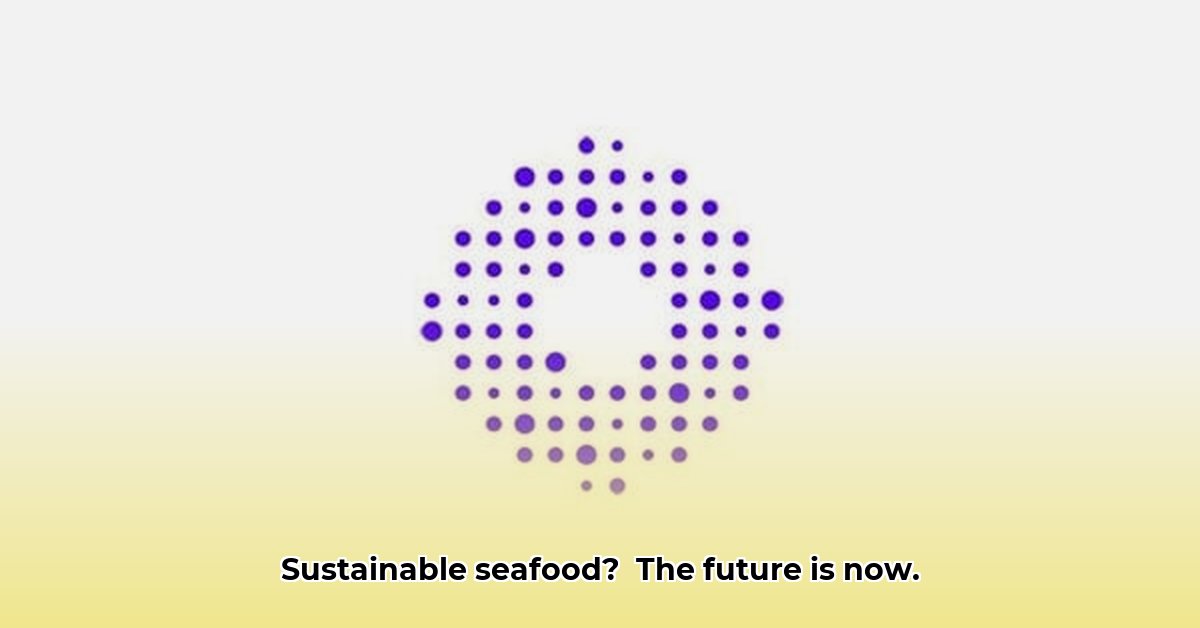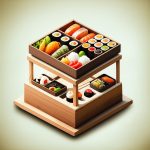The global demand for seafood is surging, necessitating innovative and sustainable farming practices. This report explores Endúr, a Nordic company at the forefront of sustainable aquaculture solutions, offering a comprehensive overview of their technology, market position, and actionable insights for stakeholders.
Endúr: Pioneers of Sustainable Seafood Solutions
Endúr, established in 1978, is revolutionizing aquaculture with its sustainable, land-based farming solutions, creating efficient and environmentally friendly ecosystems for raising fish. Their focus lies in integrating smart technology to optimize fish health, minimize resource consumption, and reduce waste, contributing to a sustainable future for the seafood industry.
Land-Based Aquaculture: Overcoming Challenges for Sustainable Growth
Land-based aquaculture offers significant advantages, including minimizing environmental impact and protecting fish from disease. However, high initial capital costs and complex regulatory frameworks present challenges. The growing demand for sustainably sourced seafood positions Endúr to address these challenges with efficient, cost-effective solutions. What key strategies are in place to overcome these hurdles, such as government subsidies, private investment, and technological advancements in RAS systems?
Endúr’s Comprehensive Solutions: Streamlining Sustainable Aquaculture
Endúr offers a complete suite of solutions tailored for fish farmers, encompassing design, construction, and ongoing support to maximize efficiency and minimize environmental impact. Their offerings include:
- Advanced Recirculating Aquaculture Systems (RAS): Highly efficient water recycling plants that maintain optimal water quality, minimize water usage (reducing it by up to 99% compared to traditional methods), and significantly reduce waste discharge.
- High-Tech Feed Rafts: Durable feed rafts equipped with sensors and automated systems that ensure precise feeding, preventing waste, minimizing feed costs and improving fish health by providing optimal nutrition. Does this precise feeding directly correlate with accelerated growth rates and reduced disease incidence, leading to higher yields?
- Complete System Integration: A streamlined “one-stop shop” approach for design, construction, and ongoing technical support, simplifying the adoption of sustainable practices. How does this streamlined approach affect project timelines, reducing the time from conception to operation, and what are the cost savings associated with this integrated model?
This integrated approach streamlines operations and makes sustainable practices more affordable for aquaculture businesses, while also reducing their environmental footprint.
Navigating the Aquaculture Competitive Landscape
While specific competitive data is limited, Endúr strategically focuses on land-based aquaculture, establishing itself as a leader in this niche rather than competing directly with traditional open-water farming. By focusing on this niche, are they limiting their potential customer base, or are they strategically positioning themselves to capture a rapidly growing market segment driven by sustainability concerns and consumer demand for responsibly sourced seafood?
Actionable Insights: A Roadmap for Stakeholder Success
Endúr’s success depends on various factors, extending beyond the company itself. Stakeholders can contribute to sustainable aquaculture’s growth by adopting proactive strategies:
- Endúr: Expand within Nordic markets targeting specific segments like salmon and trout, explore new technologies such as AI-driven monitoring systems for fish health, pursue strategic global expansion focusing on regions with strong sustainability initiatives, refine system optimization through data analytics, and invest in R&D for developing more efficient and environmentally friendly RAS technologies.
- Investors: Analyze financial performance and industry trends carefully, focusing on metrics like ROI and sustainability impact, and consider long-term investments in sustainable aquaculture diversification, supporting companies that prioritize environmental stewardship and social responsibility. What specific industry trends should investors be monitoring, such as the growth of the organic seafood market and the increasing consumer awareness of aquaculture practices?
- Governments (Nordic): Offer financial incentives such as tax breaks and grants, and streamline regulations to foster an environment conducive to innovation and growth of sustainable aquaculture, promoting responsible practices and ensuring environmental protection.
- Aquaculture Producers: Evaluate Endúr’s systems, considering long-term costs and benefits, including operational efficiency and environmental impact, and adopt sustainable technologies to enhance output, profitability, and reduce their environmental footprint.
- Consumers: Actively seek out sustainably sourced seafood, look for certifications like ASC or MSC, and support companies like Endúr prioritizing environmental responsibility, driving demand for sustainably produced seafood and promoting responsible aquaculture practices.
Risk Assessment and Mitigation Strategies
High initial investment costs and regulatory uncertainty pose primary risks for Endúr. Proactive management includes robust financial planning, active collaboration with regulators to shape supportive policies, and ongoing investment in R&D to mitigate unforeseen challenges and maintain strong stakeholder relationships. How will Endúr stay ahead of emerging ecological concerns, such as climate change impacts on water resources and potential disease outbreaks in aquaculture facilities, and what measures are they taking to address these risks proactively?
Regulatory Environment and Compliance
Endúr leverages its Nordic presence and expertise to navigate varying regulatory landscapes, working closely with regulatory bodies to ensure compliance and inform the development of sustainable aquaculture practices, providing a significant competitive advantage. How will global regulatory changes, such as stricter environmental standards and trade regulations, affect Endúr’s expansion plans, and how are they adapting their strategies to navigate these changes effectively?
The Promising Future of Sustainable Aquaculture
Endúr’s commitment to innovation and sustainability positions them at the forefront of a critical shift towards food security through sustainable practices. Despite existing challenges, ongoing research, and essential refinement techniques, the future is bright. Endúr is securing a healthy and abundant seafood supply for future generations.
How to Calculate ROI for Land-Based Aquaculture Infrastructure Investments
Key Takeaways:
- Sustainable aquaculture offers significant growth potential, requiring meticulous financial planning for successful ROI.
- Multiple ROI calculation methods enable a holistic view of profitability.
- Quantifying long-term environmental benefits impacts initial ROI calculations.
- Considering land use, location, and market conditions is paramount.
- Diversified income streams and strategic risk mitigation are crucial for success.
Calculating ROI for land-based aquaculture infrastructure investments requires a solid understanding of costs, revenues, and profitability metrics.
Understanding ROI: Measuring Profitability in Aquaculture
Return on Investment (ROI) measures the profitability of an investment, involving analysis of costs and revenues in land-based facilities. The basic calculation [(Net Profit / Total Investment) * 100%] necessitates defining “total investment” (infrastructure, land, permits, labor, feed, and operational expenses) and “net profit” (revenue minus costs).
Comprehensive Metrics: A Broader Perspective of ROI
A single ROI figure can be misleading. Consider additional metrics:
- Net Operating Income (NOI): Operational income excluding financing costs, providing a clearer picture of operational profitability. Does this clarify operational feasibility and highlight the efficiency of core aquaculture operations?
- Capitalization Rate (Cap Rate): Ratio of NOI to total investment for comparative profitability across different aquaculture projects or investment opportunities.
- Cash on Cash Return (CoC): Annual cash flow relative to initial investment, indicating liquidity and the immediate return on invested capital.
- Internal Rate of Return (IRR): Discount rate making net present value (NPV) of cash flows equal to zero, reflecting the time value of money and the long-term profitability of the investment.
Influencing Factors for Improved ROI
Several factors can impact your ROI:
- Location: Proximity to markets, access to utilities, and labor costs significantly influence operational efficiency and profitability.
- Technology: The correct recirculating aquaculture system (RAS) affects operating costs, energy consumption, and overall production efficiency.
- Species Selection: Market demand, growth rates, and production costs determine profitability and the potential for maximizing revenue.
- Market Conditions: Fish price fluctuations, consumer preferences, and market trends affect performance and the stability of revenue streams.
- Regulatory Compliance: Environmental and food safety regulations add significant costs and influence operational practices, requiring adherence to strict standards.
Steps to Calculate ROI
- Detailed Budgeting: Create a comprehensive budget detailing all anticipated expenses, including capital expenditures, operating costs, and regulatory compliance expenses.
- Revenue Projections: Estimate revenue based on projected production volumes, market prices, and sales channels.
- Calculate Net Profit: Subtract costs from revenue to determine net profit, reflecting the overall profitability of the aquaculture operation.
- Choose Your ROI Method: Select NOI, Cap Rate, CoC, or IRR to analyze ROI from different perspectives, considering factors like operational efficiency, liquidity, and long-term profitability.
- Calculate and Analyze: Calculate ROI and analyze results to assess areas for improvement, identifying opportunities to optimize costs, increase revenue, and enhance overall profitability.
Mitigating Risks for Sustainable ROI
To address risk:
- Diversify: Cultivate multiple fish species to reduce dependence on a single market and mitigate the impact of price fluctuations.
- Insurance: Protect against unforeseen events such as disease outbreaks, equipment failures, and natural disasters.
- Market Research: Understand your target market, consumer preferences, and competitive landscape to make informed decisions and adapt to changing market conditions.
Endúr Sustainable Aquaculture Infrastructure Solutions for Nordic Regions
Key Takeaways:
- Endúr ASA showcases robust growth driven by order backlogs and acquisitions.
- Financial performance reflects year-on-year revenue increases.
- Aquaculture Solutions experiences cyclical revenues, overall growth persists.
- Supportive regulations benefit Endúr across the Nordic regions.
- Successful integration of acquisitions is crucial for continued success.
- Supply chain challenges in renewable energy demand close attention.
Market Dynamics and Strategic Positioning
The Nordic region’s sustainable aquaculture demands a dedication to responsible practices. Endúr—through Total Betong AS, Igang Totalentreprenør AS, and others—is positioned to capitalize on this, expanding capabilities and market reach.
- Shop Bento Box for Sale To Find Your Ideal Lunch Container - December 6, 2025
- Lunch Box That Fits Bento Box Neatly for Daily Use - December 5, 2025
- Japanese Lunch Bag Does Double Duty as Bento Carrier and Tote - December 4, 2025










